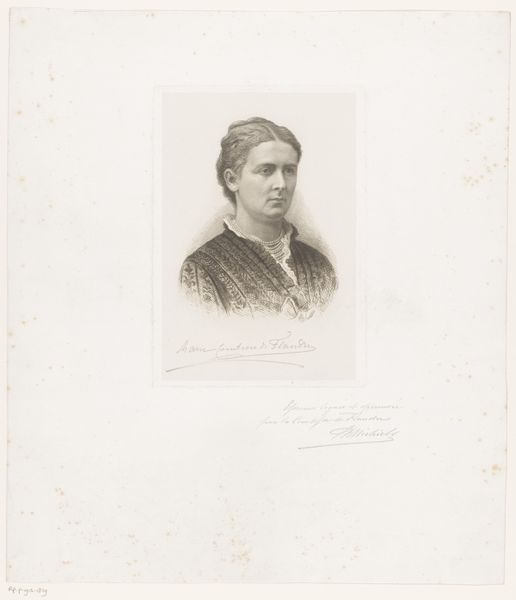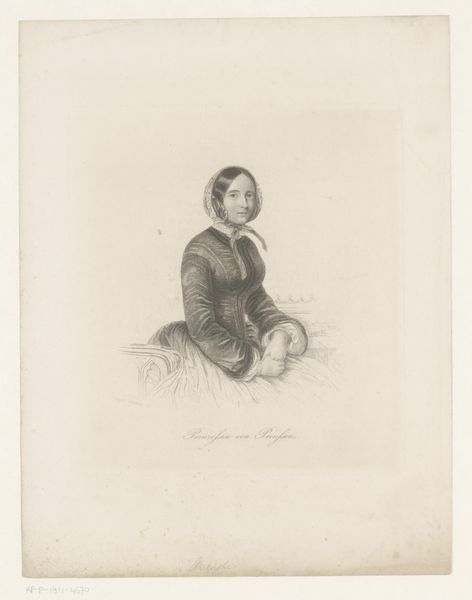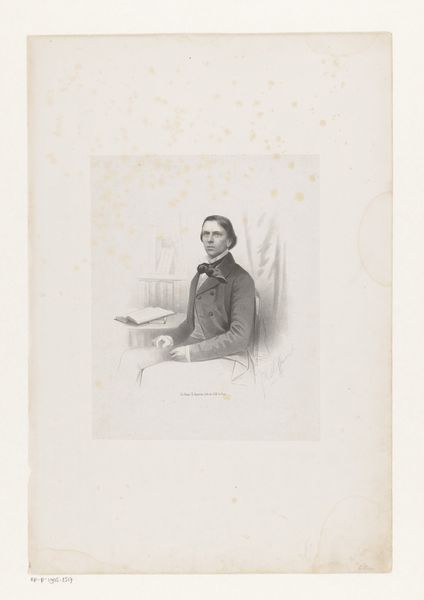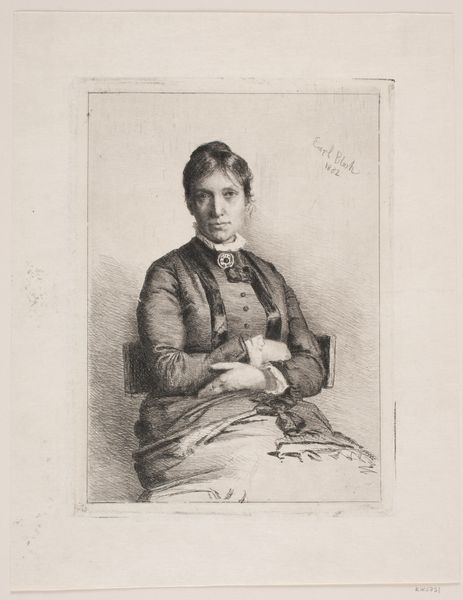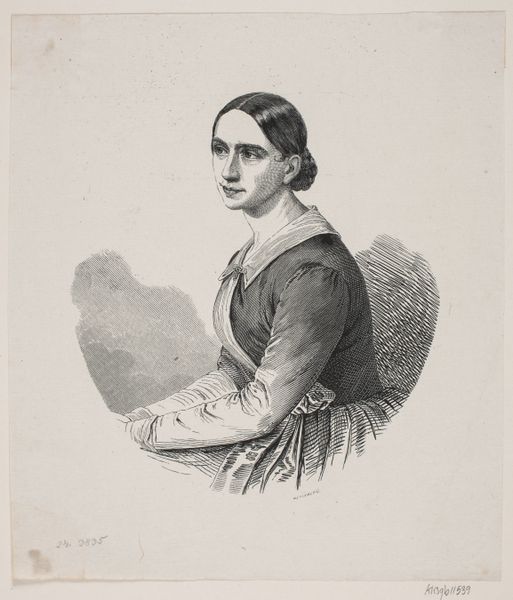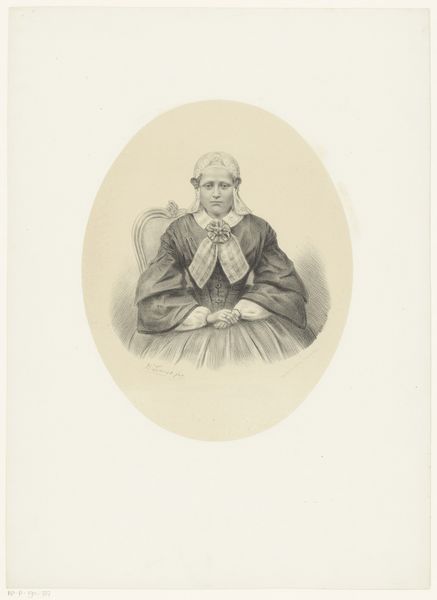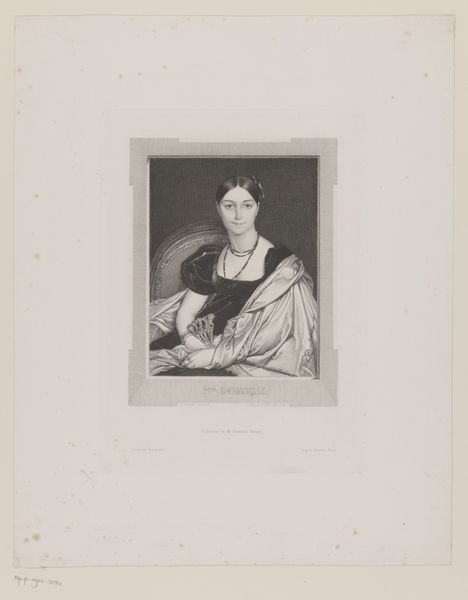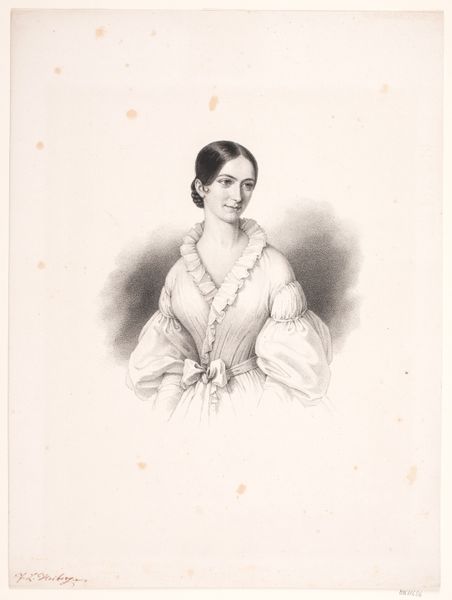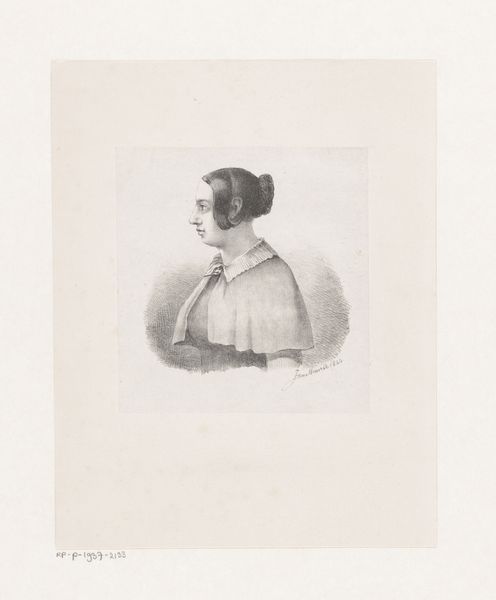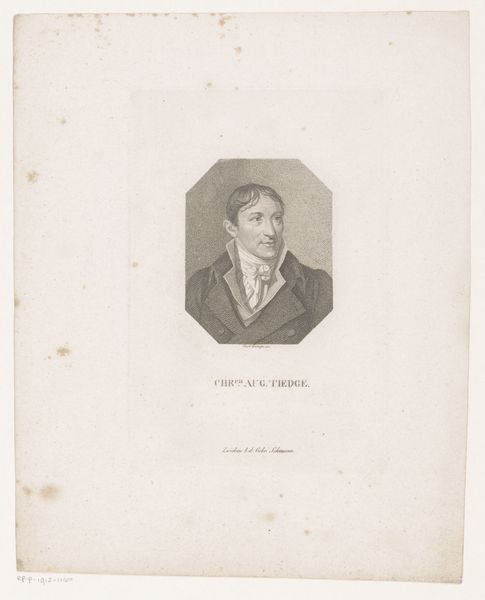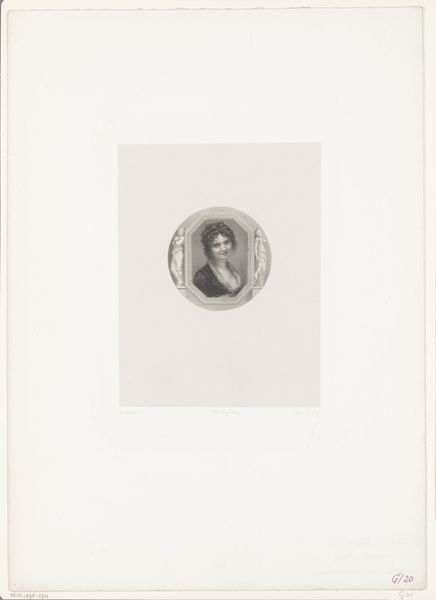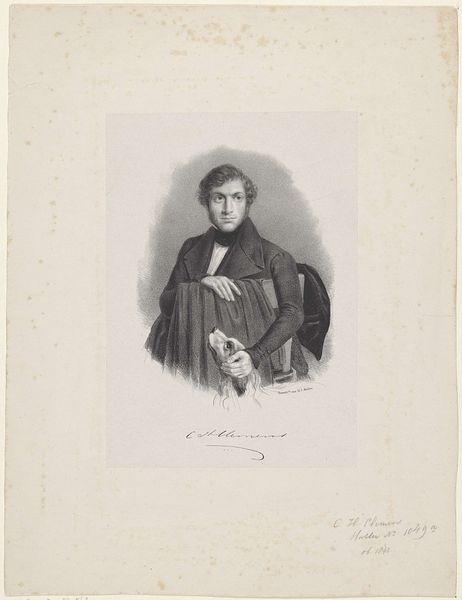
drawing, print, etching, paper, pencil
#
portrait
#
drawing
# print
#
etching
#
paper
#
pencil drawing
#
pencil
#
history-painting
#
academic-art
#
realism
Dimensions: 201 × 164 mm (plate); 323 × 257 mm (sheet)
Copyright: Public Domain
Curator: Right, let’s talk about this striking etching, “Ingres at Age Twenty-four,” created by Léopold Flameng in 1869. It’s housed right here at the Art Institute of Chicago. Editor: It’s delicate, almost fragile-looking. The way Flameng used those fine lines… It gives the subject, Ingres himself, such a thoughtful, youthful air. It has a very specific aesthetic to it. Curator: Absolutely. This work really highlights the dialogue between different eras, right? We see Flameng, working in the 19th century, reflecting back on the image of a much younger Ingres, who, in his time, was forging a path within and against the Neoclassical tradition. The academic style is evident, but there's a burgeoning realism peeking through. Editor: You know, what I find intriguing is how this portrait – created well after Ingres's youth – freezes him, essentializes him as this young, ambitious artist. It's like Flameng is commenting on the very idea of artistic legacy and the construction of genius. It situates him into a legacy. What sort of societal pressures could a young, male painter face? It suggests at something vulnerable that might not otherwise be clear from history. Curator: I love that you pick up on the societal pressures. Ingres was certainly operating in a world thick with expectation, especially as a male artist. This image is an etching, which relies on reproducible drawings that rely on linear purity and is a print for distribution. I mean, Flameng must've been conscious of his choices. To go for the precise medium as etching underscores how important the subject's artistic project would become for the contemporary imagination. The very process underscores its place in art history. Editor: And isn't that the core of it all, really? The way artists are constantly negotiating the past while trying to create the future? This image encapsulates that tension so beautifully, by literally capturing it. Also, something about capturing youth -- that, I imagine, brings another kind of pressure to the image that we ought not ignore. Curator: It’s fascinating how an image like this can compress so much historical and personal context into one frame. Editor: Totally! A quiet image holding a roaring conversation, you might say.
Comments
No comments
Be the first to comment and join the conversation on the ultimate creative platform.

